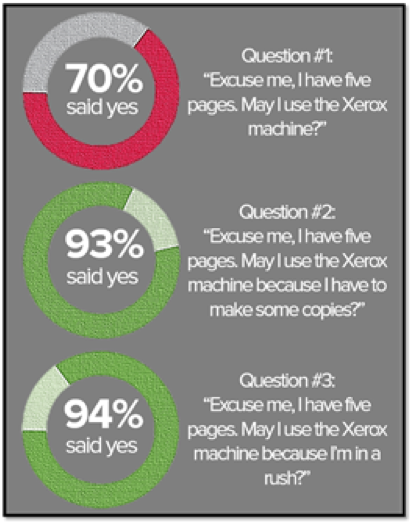When it comes to the words you use and how you say them, nothing is more powerful in the “wide world of sales.” We’ll review a couple of the other influencing factors that have a significant effect on your ability to sell, but in the end, it ultimately comes down to what you say.
The importance of words to salespeople can’t be stressed enough. Words are a salesperson’s first choice of weaponry in their effort to convert prospects into customers. Think about a customer who asks a question by email or text message…
Any type of real question requiring more than a short, quick response typically finds a good sales rep trying to get the prospect on the phone.
Why? Because they want the opportunity to ask questions so that they truly understand what the customer is asking, and they want to give a response that’s probably too long for an email or text to build value in their offering.
Prerequisites To Words That Sell
Before beginning to understand the terms that will help you close more deals, you first need a firm grasp of two other critical concepts.
#1 | Body Language
Your first impression is critical when it comes to establishing trust and credibility. Prior to muttering a single word, you’re going to be judged by the prospect. You only have 7 seconds to make a good first impression.
More importantly, during a face-to-face meeting, 93% of a prospect’s initial judgment of you will be based on non-verbal inputs like your sales body language. Additionally, 55% of your communication effectiveness will be a result of your body language.
Because of stats like these, you it’s essential to know and understand the 5 body language mistakes that can cost you the sale. If you fail to pay attention to these types of details, it won’t matter what you say. At this point, you’ve already lost the customer, and the sale.
#2 | Tonality
Once you get past the first impression and into the pitch, you need to key-in on how you’re saying certain words and phrases. 38% of your effectiveness in communicating comes from the tone of your voice.
As you use specific terminology to help you sell more, you need to be able to implement these terms using the 8 tonal patterns of sales. One of the worst things that can happen is for a prospect to interpret what you said in a negative connotation because you said it in the wrong tone of voice.
8 High-Trust Selling Words
1 | You
Being in the world of sales means you need to be focused on the customer. It’s about them, not your company or product. Incorporate the word “you” into your pitch or conversation early and often, and as often as possible. This is the easiest and most simplistic way of demonstrating that you’re 100% focused on the prospect.
Everybody loves to talk about themselves whether they like to admit it or not. Use that psychology here to build trust with the consumer and let them know you’re thinking about their needs, wants, problems and concerns.
Surely you’ve been told that it’s rude or impolite to talk about yourself, right? Incorporate that philosophy here and avoid making the conversation about you and your company. Limit how much you bring yourself into the conversation by following the 6 principles of persuasion, specifically reciprocity and liking.
Reciprocity says that people are more likely to share when someone has done so first. Use this as a way to get prospects to open up to you by sharing relevant stories they can relate to that will encourage them to share information. Liking is simple; people like to do business with people they like. Use this as a way to build rapport and establish credibility by making a connection based on similar interests.
Rule Of Thumb: Use the word “you” in the conversation once per minute
PRO BENCHMARK: USE “YOU” ONCE PER MINUTE
2 | Prospect’s Name
Along the same lines of “you,” using the prospect’s first name grabs their attention and personalizes the conversation specifically toward their needs.
Think about when you were in school, dozing off like we’ve all done so many times before. What happened when the teacher called your name out and paused to make sure you were paying attention, or when the instructor would simply use your name during the lecture and continue on?
I’d be willing to bet you snapped your little head up pretty quick and started paying attention, even if just for a short period of time before averting your attention to something else again.
People naturally pay attention and focus better when their name is sprinkled throughout a pitch or presentation. Work this into your conversations, but be sure that is flows naturally. You don’t want it the prospect to feel like you did in school when the teacher called you out to make sure you were paying attention.
3 | Value
Buyers truly don’t care about the features of your product or service, they care about solving their problem. This is the value you need to focus on. Build value in your product offering by making it all about them and focusing on what they value.
While the features may be an incredible additional selling point that can differentiate you from the competition, if they don’t address their main pain points, they’re not going to matter. Make it absolutely clear how your product or service will create the value your prospect is looking for.
“Customers don’t care about features and benefits, they only care about value and achieving their objectives” [Colleen Francis – Nonstop Sales Boom]
4 | Consensus
Words like “consensus” and “support” are critical because of the number of influencing factors involved in reaching a decision. These words are essential to gaining an expression of agreement among decision makers (DM).
Consensus can have a significant impact on the mindset of final decision maker. If you have buy-in from all of the DMs involved, communicate that as much as possible to the person signing off. You want them to know that the other people involved in making this decision are on board with it. If you don’t have support from all involved, stress how you’re going to attain it.
5 | Imagine
When you think of missed opportunities or ways of doing things better, what comes to mind? Many probably say, “Imagine if we had,” or “imagine if we did.” Regardless of the phrase, the point is that people imagine the possibilities of something different.
Stories stay with people. They’re much easier to remember and recall because they’re memorable. Because they stay with people better and they’re more effective, use stories in your communication. Paint a clear, ideal picture for the prospect and make them the protagonist.
This draws the prospect into the story and helps them to envision the solution themselves. Instead of just hearing about this magical, better future you’re promising them with your product or solution, the prospect is able to picture it. This is much more powerful than simply talking, and the word “imagine” helps set the stage.
6 | Opportunity

Very few sales processes go smoothly without a hitch. Problems almost always arise because it’s simply impossible to predict and
plan for every single situation.Don’t avoid these scenarios and eliminate the negative connotation associated with the word “problem” by replacing it with “opportunity.”
Instead of making the prospect feel nervous about a challenge that has presented itself, use positive words to display confidence and flexibility. Flip the narrative from “no problem” to “I completely understand your concern; I see an opportunity to make this run more smoothly by…..”
7 | Power Words
Power words involves expanding your vocabulary a little bit. They evoke strong feelings for the prospect, ranging anywhere from fear and discomfort to joy and safety, and everything in between.
The sales reps who perform at the highest levels are able to provoke all of these feelings at exactly the right times. Hit the appropriate notes, high and low, at the right time with power words throughout your pitch or presentation.
We created a very short list, but check out Jon Morrow’s 317 power words that pack a punch for more inspiration.
8 | Because
When asking someone to do something, like wrap up a sale, include a reason explaining why they need to take action now. Ellen Langer is a social psychologist and professor at Harvard University who demonstrated this principle in a study.

She wanted to measure the impact of phrasing on people’s willingness to let someone cut them in line by using the term “because” and providing a reason. She used the following three questions in the study:
- “Excuse me, I have five pages. May I use the Xerox machine?”
- “Excuse me, I have five pages. May I use the Xerox machine because I have to make some copies?”
- “Excuse me, I have five pages. May I use the Xerox machine because I’m in a rush?”
The final results sum it up pretty well. The first question had a 70% success rate of people allowing her to cut in line. An astonishing 93% agreed to allow her to skip when using question number two, and 94% agreed to question number three.
Ultimately, it doesn’t matter what the reason is as long as you include one. Whatever you do, don’t lie or make something up; it will be sniffed out quicker than the Cleveland Browns get eliminated from playoff contention every year. Plus, sales is all about building trust.
Conclusion
The primary weapons for sales reps to convert prospects to customers are words, and they carry an incredible impact. How a message is delivered can have a dramatic impact on the final result of the conversation. Reduce negative shadows being casted on a deal by using the right psychology.
______
SPOTIO is the #1 field sales engagement and performance management software that will increase revenue, maximize profitability, and boost sales productivity.
Want to see a product demonstration? Click here to see how SPOTIO can take your sales game to the next level.





